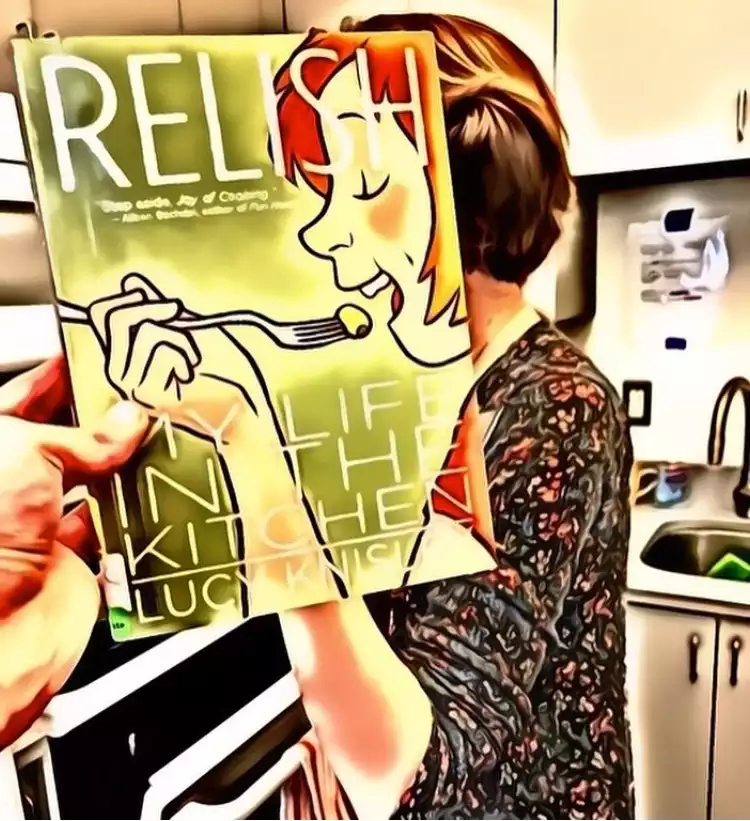
It probably doesn’t come as a surprise to hear that librarians love to talk about books, so much so that we’ve made it a part of our livelihoods. While we have plenty of time to talk to our customers about books, with so much to do throughout the day in the library, discussions with colleagues about what we’re reading do not happen as often as we would like. Talking to colleagues about their reading habits is a great way to connect with and learn more about one another. Also, everyone has such varied reading interests, so it can be helpful to talk to someone who reads different genres in order to break out of the comfort zone.
Recently, I wanted to break into the world of graphic novels. Having never read a graphic novel, I was unsure of where to start. I turned to our Technology Librarian and graphic novel aficionado, Kelsey, to help steer me in the right direction. What unfolded was a great discussion that opened up my world to a whole new way of reading! Since completing my interview with Kelsey, I have fallen in love with the graphic novel format! I encourage everyone to talk to those around you about what you’re reading. It’s a great way to get to know people and perhaps you might discover a new book or genre.
Q: When did you start reading graphic novels?
A: I started reading a lot of comics, manga, and graphic novels as a teenager. The first comic book I remember reading is Astro Boy, a Japanese Manga series written and illustrated by Osamu Tezuka from 1950 to 1968 that follows the adventures of an android named Astro Boy.
Q: How do you differentiate between graphic novels and comic books?
A: Placing a definition on graphic novels can get controversial. Is a cartoon the same as a comic? Is a comic the same as a graphic novel? A graphic novel can take on many styles and subject matters and should be called a format rather than a genre. There are fiction and nonfiction graphic novels and there is not one kind of character or storyline that consistently reappears.
Q: What do you recommend for a new graphic novel reader?
A: Lucy Knisley’s graphic novel, Relish, tells about her childhood growing up in a family that revolves around the preparation and love of food. It is one of my favorites. She has a very relatable style of writing and illustrating that I think would appeal to new graphic novel readers. I would also recommend Scott McCloud’s Understanding Comics. This imaginative book details the history, meaning, and art of comics and cartooning, and it’s in comic book format! I love the meta aspect of it. Other gateway authors I’d recommend are Gene Luen Yang, Guy Delisle, Craig Thompson, Marjane Satrapi, and Alison Bechdel.
Q: What would you recommend to someone looking for something a bit more political or historical?
A: What’s really neat about graphic novels is that they can add a level of storytelling to history that traditional typeface would not. Some of the most popular graphic novels deal with political and historical topics. Art Spiegelman’s Maus series uses art in many different allegorical ways to transport the reader into his father’s experience through WWII as a Polish Jew and Holocaust survivor.
Another great historical and important graphic novel is the March trilogy, by Congressman John Lewis. These three novels share the story of Lewis’s experiences in the Civil Rights Movement, reflecting on both the highs and lows of the broader movement. The graphic novel format allowed John Lewis to portray a dynamic between influential characters and transport readers into a historical setting, unlike traditional histories. Last year, the third book in the series won the National Book Award for Young People’s Literature, making it the first graphic novel to ever receive this honor. I am very excited to see graphic novels get this kind of recognition as they slip into all levels of school curriculum.
Q: When you’re reading graphic novels, do you tend to focus more on the illustrations or text? Do you have a favorite illustration style?
A: I know that I’m reading a good graphic novel when the two blend together seamlessly. I find colorful illustrations more personable and striking than black and white. However, some stories benefit from black and white. For instance, March is illustrated in black and white, but this only adds to the power and emotion of the story.
Q: What do you think is so compelling to you about graphic novels?
A: I enjoy the diversity in style and subject matter! Being a highly visual person, I feel as though I can immerse myself in a graphic novel. Also, I love that graphic novels usually take less time to read than a traditional novel. For someone who has little time to read these days, this is a huge benefit!
Hope you enjoy some of these titles and others in our graphic novel collection! Happy reading!
Photo courtesy of Kelsey Ockert.
